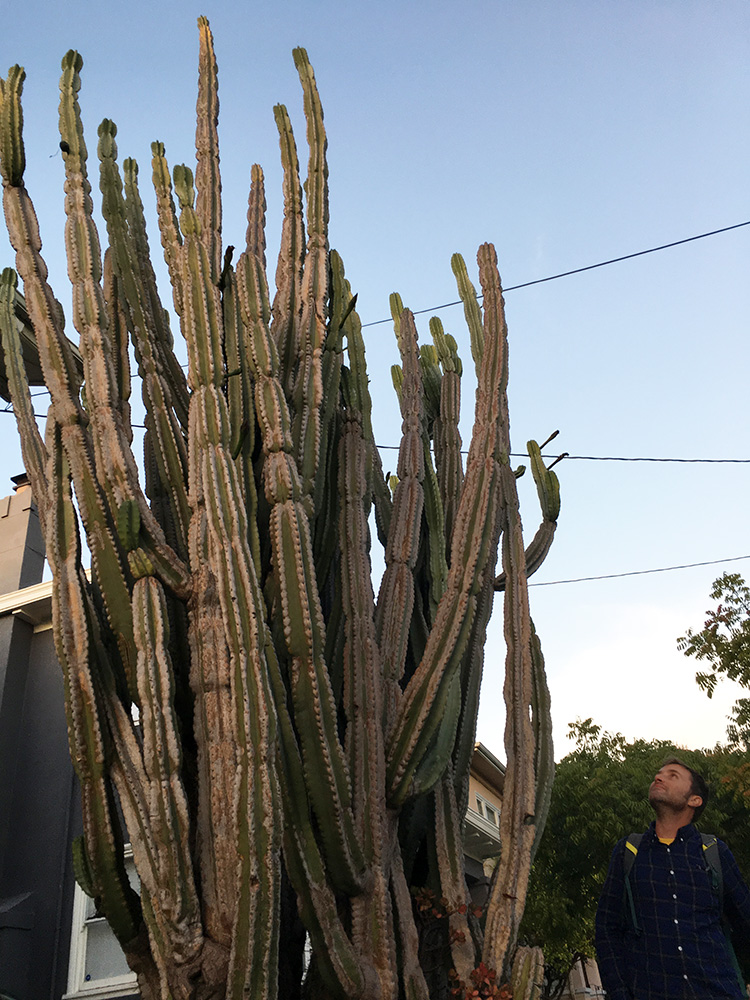Saguaro and other towering cacti have a scrambled history

Visitors to Mexico and the U.S. Southwest can’t help but stand in awe of the solitary and majestic saguaro, the towering clusters of the organ pipe cactus and Baja’s cardón, the appropriately named “elephant” cactus and the largest cactus in the world. The cardon can grow to a height of more than 60 feet.
Scientists have now sequenced the complete genomes of four of these columnar cacti, and found, to their surprise, that their family relationships are not so straightforward as their shapes suggest.
According to Noah Whiteman, a UC Berkeley associate professor of integrative biology who is a coauthor of a paper appearing this week in the journal Proceedings of the National Academy of Sciences, the cactus family tree and the giant cacti in particular – the giant saguaro, organ pipe, senita and cardón, also called the Mexican giant cactus – have been very difficult to trace. Found only in the Americas, cacti have adapted to a broad range of environments, with a current count of 1,438 species. Yet scientists disagree by a factor of 10 about how many genera of cacti these species represent.
This is in part because the same traits – succulence and a columnar form, for example – seem to have evolved separately in different lineages: what’s known as parallel evolution.

In the study, led by Whiteman’s colleagues at the University of Arizona and the Universidad Nacional Autónoma de México, the scientists created individual family trees of each gene shared across all species. They found that their histories were scrambled as a result of long generation times – saguaro cacti can live 150 years or more – making it difficult to understand the relationships among the species even with complete genomic information.
They did determine, however, that some similarities, like the succulent flesh that makes some cacti a good emergency source of water, resulted from ancient genes that were retained by some cacti but lost by others. What looked like parallel evolution, with some species gaining new genes and new functions, was actually just the random loss of genes in all the other species.
The findings could have implications for the fate of these cacti, which are losing habitat because of human development in arid areas of the Americas.
“Many species are endangered, and the fact that we don’t understand their relationships makes this fraught,” said Whiteman, who is also a faculty member with the Center for Computational Biology and an affiliate of the University and Jepson Herbaria and the Museum of Vertebrate Zoology.
The work also addresses a recently recognized complication in interpreting the evolution of all plants and animals.
“Only with whole-genome sequencing were we able to see this pattern of incomplete lineage sorting, called hemiplasy, which looks superficially like convergent or parallel evolution, or homoplasy,” he said. “It’s an important advance because one could mistake such patterns as evidence for parallel evolution at the molecular level, which is a hot topic in evolutionary biology right now.”
